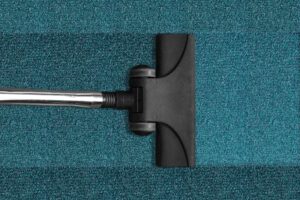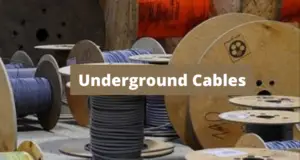Electrical cables are an essential part of our modern lives, used to carry power and data between devices and infrastructure.
However, when cables are coiled, they can generate heat due to a phenomenon called “induction.”
In this article, we’ll explore why coiling electrical cables generates heat, and what can be done to prevent this from happening.
Table of Contents
How Induction Works
To understand why coiling electrical cables generate heat, it’s first important to understand how induction works.
Induction is the process of using a magnetic field to generate an electrical current in a wire. When a wire carrying an electric current is placed in a magnetic field, it generates its own magnetic field.
If a second wire is placed within this magnetic field, an electrical current can be induced in the second wire, even if it is not directly connected to a power source.
This process is used in many electrical devices, such as transformers, where a changing magnetic field is used to induce a voltage in a secondary coil.
However, induction can also occur unintentionally, such as when electrical cables are coiled.
Why Coiling Generates Heat
When electrical cables are coiled, the magnetic fields of the individual wires can interact with each other, inducing electrical currents in nearby wires.
These induced currents generate heat due to the resistance of the wire, which is a property of the material used to make the wire.
This heat can build up over time and cause damage to the cable insulation or even cause a fire in extreme cases.
The amount of heat generated depends on several factors, including the thickness and length of the wire, the strength of the magnetic field, and the frequency of the current.
In general, the thicker the wire and the stronger the magnetic field, the more heat will be generated.
Read also my comprehensive article: Coiling Cables Wrong? Here’s What Happens
Preventing Heat Buildup
To prevent heat buildup and potential damage, it’s important to take several steps when using electrical cables.
First, it’s important to use cables that are rated for the electrical load being carried. Overloading a cable can cause it to generate more heat than it can safely dissipate, leading to damage or failure.
Second, it’s important to avoid coiling cables tightly or for extended periods of time. This can create a strong magnetic field that induces electrical currents in nearby wires, generating heat. Instead, cables should be loosely coiled or straightened out when not in use.
Third, it’s important to inspect cables regularly for damage or fraying. Damage or fraying can increase resistance in the wire, leading to more heat generation. If a cable is damaged, it should be replaced immediately.
Conclusion
Coiling electrical cables can generate heat due to induction, which occurs when the magnetic fields of nearby wires interact, inducing electrical currents that generate heat.
To prevent heat buildup and potential damage, it’s important to use cables that are rated for the electrical load being carried, avoid coiling cables tightly, and inspect cables regularly for damage or fraying.
By following these guidelines, you can ensure that your electrical cables operate safely and reliably.



